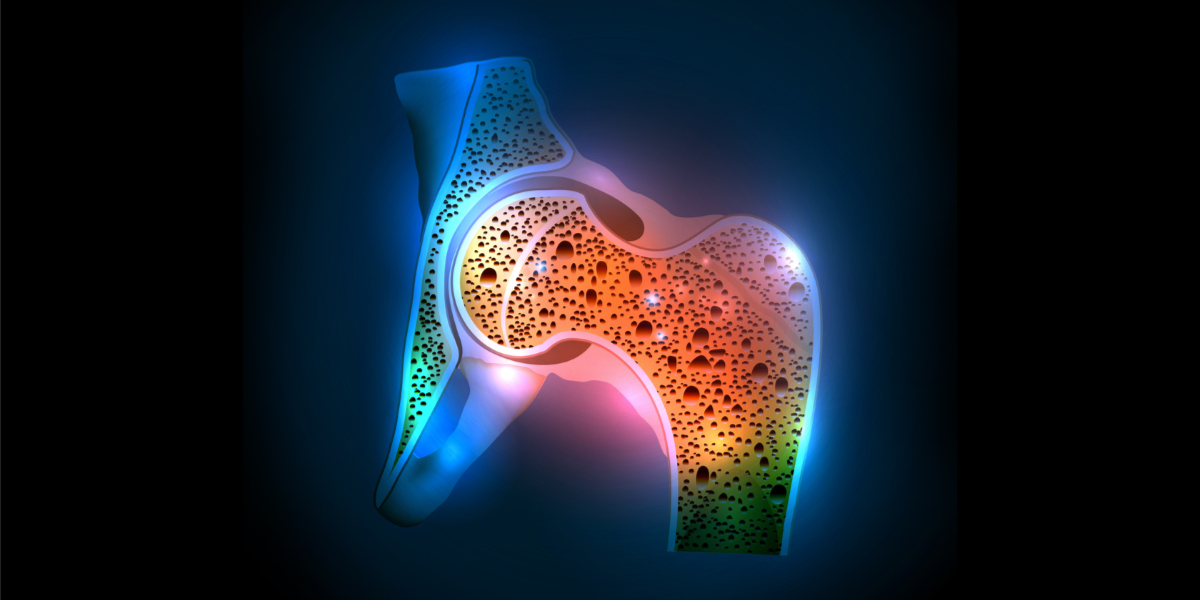Osteoporosis is a silent epidemic in the world today. Most people think that bone loss is something that only affects elderly women. The truth is, more than half of all women and men in the United States over the age of 50 have osteopenia (also known as “pre-osteoporosis”) or osteoporosis. In fact, nearly one-quarter of all men over 50 will experience a bone fracture caused by osteoporosis.
Poor bone health predisposes one to fractures. This not only creates tremendous pain and immobility; bone fractures can also be life-threatening. In older adults with hip fractures who become bedridden, the risk of pneumonia and the development of deadly blood clots skyrockets. Moreover, men who suffer a major bone fracture are more likely to die from the injury compared to women.
Now here’s the part of the bone-loss story that you have not been told: Not only does osteopenia and osteoporosis increase the risk of fractures, as bone decays, it releases compounds that increase the risk of cancer, heart attacks, stroke, diabetes, and Alzheimer’s. Furthermore, osteopenia and osteoporosis are now being found in young adults. This makes it essential that ALL adults be tested for bone loss and take prompt and vigorous action to prevent or reverse it!
Please don’t be fooled by the notion that simply taking enough calcium will prevent or reverse bone loss, because it won’t. That’s because the underlying cause of osteopenia and osteoporosis is multifactorial. Here are the most common causes of bone loss:
- Advancing age
- Vitamin deficiencies: D and K
- Mineral deficiencies: Boron, calcium, magnesium, manganese, silicon, and zinc
- Hormone deficiencies: DHEA, estrogen, progesterone, and testosterone
- Sedentary lifestyle, sarcopenia (loss of muscle mass), and lack of weight-bearing exercise (strength training)
- Excess fructose and animal protein consumption
- Chronic inflammation
- Oxidative stress
- Microcirculatory dysfunction with decreased oxygenation of bone
- Diabetes
- Small, thin frame and being underweight (BMI <18.5)
- Bone-depleting drugs: Anti-convulsants (e.g., Dilantin), cancer chemotherapy, prednisone, Coumadin, and proton-pump inhibitors (e.g., Nexium, Prilosec, Prevacid)
- Heavy-metal toxicity: Cadmium and lead
- Alcohol and tobacco use
- Autoimmune disorders
- Genetic disorders: Hemochromatosis, hemophilia, hypophosphatasia, and thalassemia
- Gastrointestinal disorders: Celiac disease, Crohn’s disease, and liver disease
- Chronic kidney disease
- Cancer: Leukemia, lymphoma, and multiple myeloma
- Endocrine disorders: Cortisol excess (adrenal stress), Cushing’s syndrome, hyperthyroidism, and hyperparathyroidism
Comments from Dr. Daniel Thomas: Finding a physician trained in metabolic and nutritional medicine is vital to thoroughly address the above conditions and prevent or reverse bone loss without the use of potentially dangerous drugs, such as Actonel, Boniva, Evista, Forteo, Fosamax, Prolia, Reclast, or Zometa. Because bone health is so vital to overall health, the first step is to be tested to see if you have osteopenia or osteoporosis.
In our office, we use a machine that uses cutting-edge technology to assess bone health. Unlike a DEXA scan that exposes you to ionizing radiation, our machine utilizes the newest FDA-cleared technology that uses safe ultrasound waves to assess the microstructure, elasticity, cortical thickness, and density of the heel bone. Studies have shown that this correlates with fracture risk of the wrist, spine, and hip. With this technology, not only can we measure your degree of bone loss, we can also use it to monitor the progress of treatment. The test takes just 15 minutes and costs only $179. Because strong bones are so vital to your health and longevity, this test is worth every penny!
